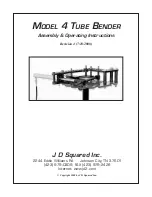
12
3. OPERATIONAL OVERVIEW
This chapter presents an operational overview of the hardware for ZT 8952. The board's
functions are described in detail, and answers are provided for some commonly asked
questions.
Other topics discussed in this chapter include:
•
Using the ZT 8952 in an STD DOS application
•
Using the ZT 8952 in 8-bit and 16-bit mode
•
How the ZT 8952 I/O is mapped into the STD I/O space
•
Drive interfacing
FREQUENTLY ASKED QUESTIONS
Is ZT 8952 compatible with STD 32?
Yes. ZT 8952 meets timing requirements for STD 32 bus structures. STD 32 is a
superset of STD-80.
What is the IDE Interface?
IDE stands for Integrated Drive Electronics. IDE applies to PC-AT style controllers and
to any other drive using front end logic to manage the physical media. This logic
improves performance by relieving an external controller's need to manage the physical
media. While the AT style IDE drive is the most popular interface, other drives are
available for other standards. "IDE drive", as used in this context, is an AT style IDE
drive.
The IDE interface is a 16-bit interface for the IBM AT. How does ZT 8952 allow
operation within the STD bus and with 8-bit CPUs?
ZT 8952 uses control logic to convert from the STD bus to the IDE interface. Byte
packing and unpacking is done for the IDE interface during transfers to and from the
STD bus. The first byte in 8-bit CPU data writes is buffered, then written to the drive
when the second (odd) byte is transferred. The logic latches the odd byte of the 16-bit
read, while returning the even byte. The latched data is returned on the next read to the
odd byte location.
Artisan Technology Group - Quality Instrumentation ... Guaranteed | (888) 88-SOURCE | www.artisantg.com














































